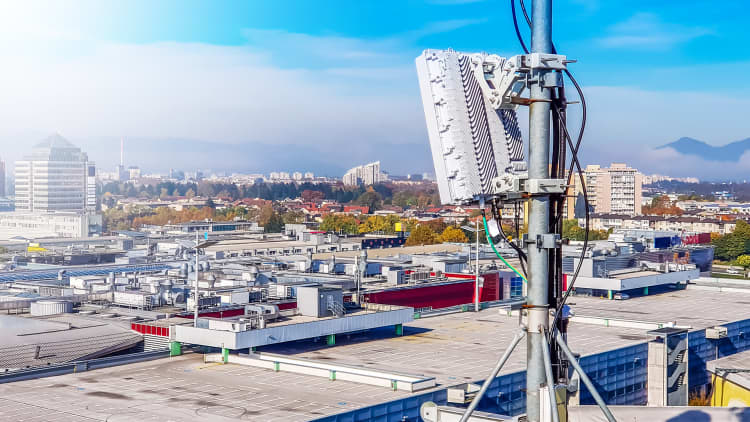AT&T announced on Thursday that its mmWave "5G+" network is now available to everyone. The launch coincides with the release of Samsung's new Galaxy S20+ and Galaxy S20 Ultra phones on Friday, which will use the faster network.
Until now, AT&T had let only businesses use the fastest mmWave network and restricted consumers to its slower but more widespread 5G low band network. This means AT&T is now competing more aggressively against Verizon and T-Mobile, which also have mmWave networks available to all customers.
If you're shopping for a new Samsung phone on AT&T, keep in mind that the regular Galaxy S20 only runs on the slower 5G network and doesn't support mmWave 5G on AT&T.
As a refresher, since 5G is really confusing right now, recall that AT&T, T-Mobile and Verizon are rolling out two flavors of 5G network: faster mmWave 5G that works within a block or so of a capable tower, and low-band networks that are more widely available but aren't as fast. AT&T and T-Mobile have both types of networks currently available, while Verizon hasn't activated its low-band network yet. Sprint has focused on a mid-band 5G network that falls between the two, which is one reason why T-Mobile wants to acquire it.
This means that AT&T customers who buy the Galaxy S20+ and Galaxy S20 Ultra on Friday will be able to tap into really fast mmWave "5G+" branded networks in parts of 35 cities where AT&T has rolled out mmWave. In these areas, customers should see speeds that can be more than 20x faster than your standard 4G connection, allowing them to download movies in a just a few seconds.
When that's not available, they'll fall back to AT&T's low-band 5G network, which covers 80 million people across 80 markets in the U.S., or so-called "5GE," which is really just a faster version of 4G. (Most phones today work on those "5GE" networks, which is why you may already see that 5GE icon on your current phone. But it's marketing, not real 5G.)
There's no need to rush out and buy a 5G phone just for the sake of it, since the biggest benefit is just really fast download speeds when you're standing near a tower in one of AT&T's markets. In a few years there may be more of a reason to do so, however.
But, if you're buying the Galaxy S20+ or Galaxy S20 Ultra anyway -- the latter of which is one of my favorite phones to launch in recent years -- then it's nice future-proofing. A single line on AT&T with support for 5G starts at $75/month but that price drops as you add more lines to your account.



